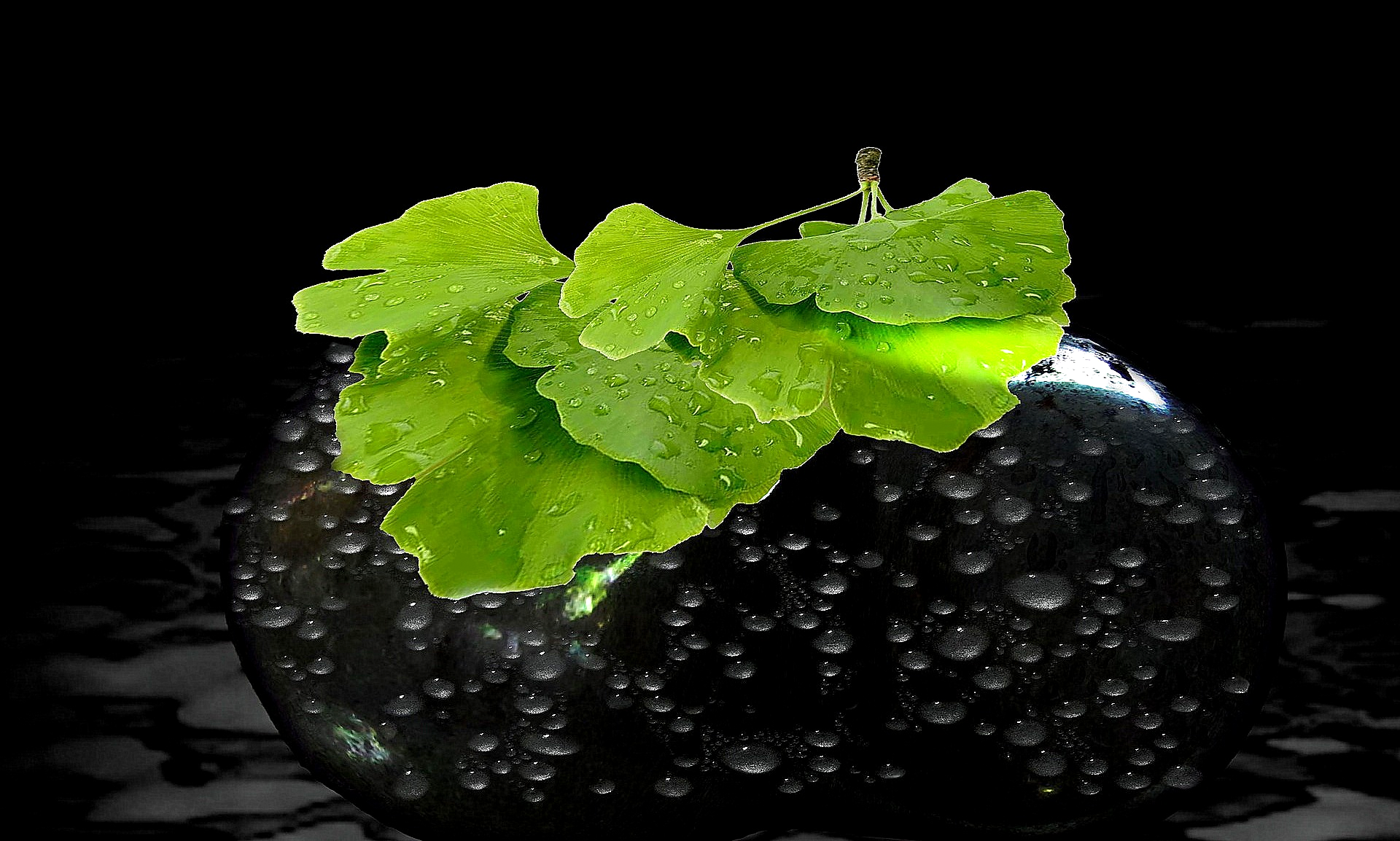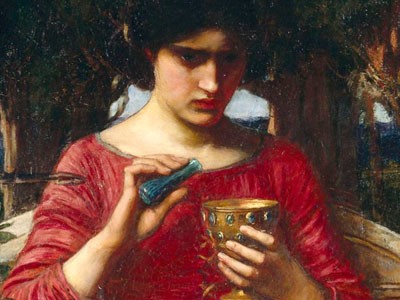This true without lying, certain and most true.
That which is below is like that which is above and that which is above is like that which is below to do the miracles of one only thing.
(Tabula Smaragdina – Emerald Tablet – of Hermes Trismegistos, translated by Sir Isaac Newton)

The term esotericism originates from the ancient Greek “ἐσωτερικός”, which means as much as “directed inwards”. Esotericism was once regarded as a secret doctrine, but today it can be found everywhere in the alternative faith scene and has long been accessible to the general public.
Nowadays, esotericism is understood to mean practically any discipline that is neither empirically nor rationally verifiable and therefore does not agree with scientific findings – and to a large extent contradicts them – and deals with mythical and spiritual topics. Esotericism and occultism (lat. “occultus” = hidden, mysterious, dark) are closely related. Occultism is usually defined as the more practical part of the same worldview. Meanwhile, there is an increasing mixture of esotericism with ancient wisdom teachings of various cultures and predominantly Far Eastern religions.
Many ideas of the archaic world view can be found in “alternative medicine”. Esoterics of all fractions represent ancient ideas, which contradict all today known scientific knowledge and allegedly go back to Hermes Trismegistos. Hermes Trismegistos was (possibly) a priest who lived in the third century BC. Some speak of a deity, a syncretic fusion (i.e. a mixture of religious ideas into a new world view) of the gods Hermes and Thot. Esotericists repeatedly quote the hermetic philosophy, i.e. the fifteen sentences Trismegistos supposedly wrote down on emerald tablets. Esotericists believe that in these sentences “all knowledge of mankind is summarized”, whereby the second and central sentence is: “What is below is equal to what is above”.
The core of the esoteric world view is the assignment of the ten eternally existing primordial principles. These embody for symbolic astrology the basic building blocks of all life in the universe – to the “ten planets” (the “heavenly representatives” sun, moon, Venus, Mercury, Mars, Jupiter, Saturn, Uranus, Neptune, Pluto) and the four, respectively five elements. Accordingly, in the understanding of symbolic astrology, the world is constructed from ten eternally existing, divine primeval principles (archetypes), which can be found in hierarchies in all layers of being – from the macrocosm to the microcosm, from top to bottom and from inside to outside.
The well-known Austrian homeopath Clemens Fischmeister argued the same way in his article “Wie denkt ein klassischer Homöopath? (How does a classic homeopath think? – published in “Facharzt” 2002). There he writes: “The healing takes place in hierarchies, from top to bottom … from the most important to the less important organ” (Hering´s rule), whereby he described (completely unchallenged) the skin as the “most unimportant organ of man”!
Another basis of homeopathy is the “principle of similarity” (Similia similibus curentur). This is associated with the imaginative idea that it is possible to eliminate symptoms of disease by diluting and potentiating primal substances – e.g. arsenic – which in healthy test subjects trigger symptoms similar to those shown by the patient. This “principle of similarity”, which does not play the slightest role in modern medicine, is based on the medieval “theory of signatures”, which is closely linked to the analogous thinking of all esotericists. It is the doctrine of the “signs in nature” that supposedly point to inner connections and similarities within the framework of the entire divine creation. These signatures are thus a work of God which man only has to recognize. Accordingly, there are analogies between form, colour, smell, location and astrological classifications. In the logic of the faithful, above all the similarities are of great importance. For example, the kidney-shaped bean with the kidney, the brain-shaped walnut with the brain, heart-shaped leaves of the melissa with the heart, the mistletoe as a semi-parasite with cancer, the lady’s mantle with female organs and lungwort with the lungs are said to be related. Bitter-tasting plants are said to have a relationship to the “element” fire, which is related to the sun, and thus stimulate metabolic processes.
This ancient, imaginative and completely unscientific doctrine, which in its concrete formulation goes back to Paracelsus and the Neapolitan doctor and alchemist Giambattista della Porta, also conveys the belief that the colour of medicinal products gives an indication of the diseases for which they are intended to be used. The colour red, for example, for heart diseases, blue for reducing restlessness. The doctrine of the “divine signatures” is also part of many esoteric treatment methods such as Ayurveda medicine, traditional Chinese medicine and, last but not least, homeopathy.
Like many astrologers and homoeopaths today, the vitalist Hahnemann believed in the “spiritual essence of the primordial substance” – which unfolds more and more strongly through the process of potentizing (diluting and shaking towards the center of the earth) and acts most strongly as high potency -, in the “cosmic primordial force” and in the “primordial idea that permeates all levels from top to bottom”. In the vertical world view of astrology, for example, the original principle of Mars (“the god of war and ruler over the wild aries”) is analogous to aggression and ferocity, to certain organs and body parts such as blood, head, teeth, nails, gall, striated muscles, the “element” fire, to the red colour of the blood and to certain Martian plants.
In homeopathy, therefore, the often prickly “Martian plants” of astrologers are associated with certain human organs (blood vessels, gallbladder, muscles and head), the colour red and the element fire. This is why homeopaths prescribe the original substances Aconitum, Allium cepa and Belladonna – all “Martian plants” – for severe, feverish, fiery inflammations, for gallstones as well as for bright red head, bleeding and blood congestion. Exactly such nonsensical recommendations for the treatment of severe febrile diseases with the Mars plant Belladonna can be found again and again in various magazines and online.
Other planets and their earthly plants and metals also play an important role in the thinking of homeopaths. In astrology, the planet Saturn is always associated with the colour lead grey, the metal lead, with lime deposits, reduction and stone ailments. In addition, astromedics see a connection between the primordial principle of Saturn and the skeleton, kidney, gall bladder and spleen. It is therefore not surprising that the “original substance” lycopodium (a “Saturn plant”) and the metallic lead of homeopaths are used in patients with reduced general condition, dirty grey skin colour and “hardening” caused by gout, arteriosclerosis, diseases of bile, kidney (nephrosclerosis) and skeleton. The planet Uranus is connected to varicose veins, nerves and the sexual urge in the vertical world view of astrology. Consequently, the most important “uranium plant” in astrology – hamamelis – is used by homeopaths to treat symptoms caused by varicose veins, venous bleeding, nerve inflammation and testicular diseases.
Other examples are also included: Following closely astrological (pseudomedical) ideas, homeopaths prescribe the Venus metal copper for cramps of all kinds and disorders of the nervous system; the sun metal gold for cardiovascular disorders, increased blood pressure and depression; the Jupiter metal tin for nervous exhaustion, neuralgia and liver pain; or the moon metal silver for restlessness and neurasthenia.
Remarkably also the common “holy” numbers of all esotericists: The 12 stands in some schools of homeopathy for the modalities (12 environmental influences), in other esoteric pseudosciences for zodiac signs and houses in astrology, the 12 disciples and 12 senses of Rudolf Steiner. In homeopathy the 10 often stands for organ and emotional hierarchies, otherwise for heavenly tribes, number of perfection and regional centers of anthroposophy, the 10 commandments and 10 planets (incl. moon and sun). The number 5 is the often recommended dosage unit for taking globules, it also stands for the pentagram, the 5 elements, 5 seasons and 5 organs of Chinese medicine. In homeopathy, the number 4 partly stands for the 4 constitutions (corresponding to the four-juice doctrine of Hippocrates) and the 4 basic qualities; in other esotericism it stands for the quadrants in the horoscope, the 4 Vedas of Ayurveda, the 4 members of Anthroposophy, the 4 Gospels and Archangels.
Anyone who thinks that homeopathy has nothing to do with esotericism (Kabbalah, numerology, astrology, Ayurveda or anthroposophy etc.) is mistaken.
(Author: Dr. Theodor Much is the author of Der große Bluff: Irrwege und Lügen in der Alternativmedizin – The Great Bluff: Wrong ways and lies in alternative medicine; Goldegg Verlag, 2013)



One Reply to “Homeopathy is Esotericism”
Comments are closed.